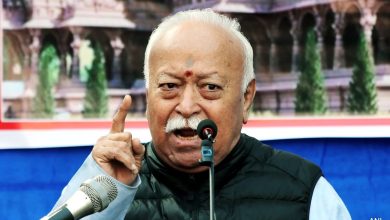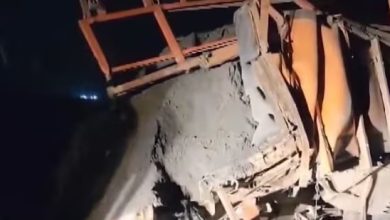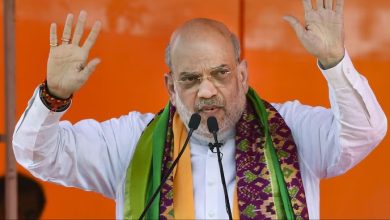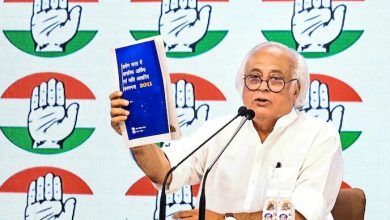Here’s Why Dalits Are Out on Streets Protesting Against SC/ST Act

The year 1989 is four decades different from the year 1949. In the year 1949, Indian Constitution was accepted. In the year 1989, Scheduled Caste /Scheduled Tribes [Prevention of Atrocities] Act, also known as Dalit Act, came into being.
Accepted in 1949, Article 17 of the Indian Constitution abolishes untouchability, forbids its practice. Brought into practice in January 1950, Indians begun ignoring the constitutional verdict-of- ending untouchability. Those who fought the British for their Independence, continued subjugating the fellow-Dalit citizens. It was a betrayal of the freedom movement promise.
In the year 1955, an amendment in the Constitution was brought in, and a new Act came into being to give teeth to Article 17. It was called Untouchability [Offences] Act. The Act makes practice of untouchability punishable. Preventing Dalits accessing to public places-restaurants, hotels, religious places, denial of services such as haircut, cloth washing, for instance, were defined as crimes.
The Untouchability Act didn’t deal with atrocity or violence against Dalits. Not that Dalits were not attacked those days—in fact a major massacre had taken place in the Tamil country. But, by and large, the caste society didn’t need violent methods to control Dalits, small wooden sticks were effective tools in controlling Dalit hamlets as Rifles today are.
The Dalit Act on the other hand, primarily targets injustice meted out to members of the Dalit/Tribe communities. In fact, the spirit of the Dalit Act is to protect victims in situations of conflicts where they are targeted for rising, using goods and gadgets that are markers of higher status.
For instance, the first provision in the Dalit Act refers to the followings: “Forces any person who is scheduled caste and scheduled tribe to eat or to drink any inedible or awful substance”.
The act also deals with land disputes, and, also, legal battles. For instance if a non-Dalit/Tribe in a court battle “gives false or fabricated evidence with the intention of convicting any member of scheduled caste or tribe…then the person who has given that evidence shall be punished with death”.
The Dalits in the times of Baba Saheb Ambedkar, more specifically in the Article 17, can be seen seeking their existence as human beings, with minimum fundamentals of human dignity. The Dalits in the Dalit Act 1989 can be seen in confrontation with the Caste Hindu society.
What does thus this mean, or what happened between 1949 and 1989?
Midst Green Revolution-1980s—a substantial population of Dalits had begun skipping hunger, first ever in past many millenniums, also, Dalits accessed currency. A great number of Dalits declared their freedom from caste landlords. Constitution propelled democracy, industrial expansion, urbanisation, and mass education of Dalits, consciousness building by activists, gave the community air of freedom. Migration to cities, and lapping up caste-neutral jobs gave them not only freedom to choose jobs, but also freedom back home from the caste hold.
Also, by 1980s, a crop of Dalit officers in the bureaucracy had become visible, now seeking positions of departmental heads, for instance. By this time frame, the orthodox caste Hindu society felt threatened, spoiling Dalits’ ACR-Annual Confidential Report, became an unstated movement. This very special social situation created conditions for the need of the Dalit Act 1989.
A further re-look at governments’ welfare schemes, including the Untouchability [Offences] Act that was amended as Protection of Civil Rights Act in 1976, were all to protect Dalits that appeared hapless. The Dalit Act on the other hand, protects Dalits that are rising. Half a century back, there were hardly instances of Dalit grooms being stoned, or a Dalit knifed for sporting twirled moustaches. Then, none would even in dreams, think of riding horse in weddings or growing twirled moustaches.
While India is changing fast, caste control is on the steady decline, there is an orthodox section of the caste Hindu society that is turning nervous, and violent at times. Rise of Dalits as free citizens unsettles them. Why someone should after all feel so disturbed watching a Dalit ride a Royal Enfield Bike. Why should some risk police action, and shave moustaches of a Dalit?
To the question of low conviction rates, one hardly needs to be a data scientist to answer this question. Dalits are just 17 percent of the Indian population, and as a social minority, the pressure of the majority forces not only witnesses into turning hostile, even complainants turn indifferent to their own cases.
Arrests under the Dalit Act has worked as a great deterrent. This fear of immediate arrest gone, the caste criminals will have field days.
To the question of misusing the Dalit Act, answers can be multi-layered. Is there any Act, Rule, Law on this planet that are not abused by some individuals. Should all that be amended? Should section 302 too be amended because some have misused this?
Why after all, why would a Dalit would implicate someone falsely? At worse, a Dalit being constantly harassed might just use this Act just to settle scores because all other IPC sections don’t bring any relief. Please remember, in dispute with Dalits, as the case is between blacks-whites, non-Dalits always keep Dalits’ social base in their minds. This in itself is criminal.
Laws, rules, even constitutions get amended, all that, to give relief to the people. This is a rarest of the rare occasions where potential caste criminals are given relief. What an irony of justice!!!





